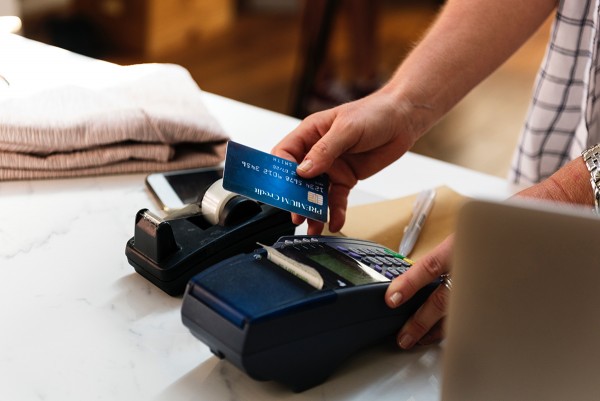Have you ever got to the till and experienced the embarrassment of realising you don’t have enough cash on you to pay? You’ve just picked up an impulse buy then realised that the small change, the pen, tissue and half pack of chewing gum in your pocket won’t cover it. The likelihood that you’re carrying a cash card these days fixes that and does generally make life easier. I’d much rather carry a card than bring along however much cash I think I’d need to cover a day out with the family.

Cash payments are already superseded by debit cards as the most popular way to pay in the UK, according to industry trade body UK Finance. The decline in cash payments and the flip to cards now being number one is largely attributed to the popularity of contactless payments. The younger generation in particular would rather not carry cash and an increasing number of smaller businesses are moving with the times and accepting different payment methods. Even the Church of England is on board, introducing electronic payments in place of traditional collection plates. And this trend is set to continue.
This is by no means unique to the UK though. In fact in Sweden, only 2% of payments are made using cash. Meanwhile, South Korea’s Central Bank has set a target of phasing out all coins by 2020. And in China even beggars and buskers are using QR codes to accept donations.
I’m not sure if this is a plus but apparently paying by card anaesthetises the psychological pain associated with parting with cash. The downside to this is that consumer debt is on the increase, fuelled by the ease of paying with contactless cards.
There are already many places that won’t accept cheques any more. Will there come a time where we can’t shop or eat out with good old fashioned notes and coins? Some stores are going completely cashless. Waitrose, for example, has already opened its first cashless store. This works well for anyone who is competent with using cards or happy even to use their phone to make payments. Costs are kept down for financial institutions and retailers handle less cash. But what about the older generation? Or those who are more vulnerable? My granny struggled as it was to understand debit cards and in fact never actually used hers. It was cheque or cash all the way, even if it meant carrying a pile of notes in her purse. That wasn’t very safe at all, nevermind how safe electronic payments might be.
The opposite is true though is some areas of Asia and Africa where governments are putting electronic payment infrastructures in place in order to give more disadvantaged people access to finance. In Kenya, for example, mobile phone based money transfer service M-Pesa helps those who were living in poverty and generates economic growth.
So how safe are cashless payments? Chip and PIN technology reached the UK in 2006, way behind countries like France which introduced the system as early as 1986 and rolled out in 1992. It does seem pretty reliable, as long as you take care to shield your PIN, and certainly harder to bypass than by forging a signature for a checkout assistant who might give it a quick glance over. But I just don’t get how contactless cards can be secure, in fact I’ve decided to ask my bank to have a card without the contactless feature. Surely if I lost my card, someone else could happily spend up to £30 in various different shops before I’ve realised the card has gone and its cancelled. There are even scams whereby fraudsters can pick up your card details and spend your money just by standing close enough to you and your contactless card.
Voice and face recognition and retina scanning are said to offer much better security than passwords so these are technologies I look forward to seeing in more widespread use to keep fraud and theft at bay.
But what about when technology goes wrong. We’ve all seen in the news the fallout from a major bank undergoing an IT meltdown, or worse experienced the pain of it ourselves. Many IT systems in UK banks are the same ones installed in the 1970s and the kind of failures seen with the likes of TSB prove that they can’t handle the pressure of newly integrated add-ons and the level of traffic. And at the end of May this year, the Europe-wide Visa outage left customers unable to access their accounts, restricted payments and in some cases put a stop to cash withdrawals. With so many bank branches now closed, the options are limited when technology goes wrong.
For most of us though, we’re not limited to one card, so in these kinds of situations, as long as our data hasn’t been compromised, we’d easily reach for another card whilst the difficulty with the first one is resolved.
It seems it’s very much a case of convenience versus performance in terms of guaranteed uptime and security. In the case of failures, one provider might let us down, and we might walk away from them.
Overall though, it doesn’t look like we’ll walk away from the tech altogether. Perhaps cash will remain as a secondary payment method. Or perhaps it will just be reserved for the way we leave a gift inside a card for old time’s sake.
